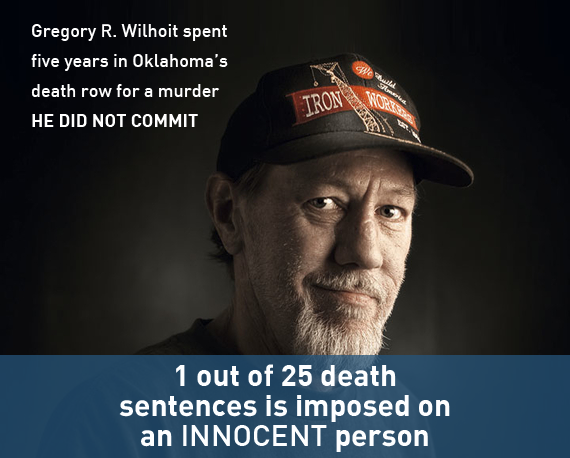The Death Penalty: How Bad Does It Have to Get Before We Call It Quits?
Page Media

Because this week, it got really bad.
If you’ve been reading the news at all this week, you’ve been inundated with some pretty gruesome news in the death penalty arena. News that has caused outrage and should give every person in this country pause.
It goes like this:
On Monday, the Proceedings of the National Academy of Sciences published a new peer-reviewed study revealing that on in twenty-five people sentenced to death in the United States between 1973 and 2004 were innocent. The very next day, the state of Oklahoma botched Clayton Lockett’s execution after weeks of refusing to disclose basic information about the lethal injection drugs it would use.
>> Share this image on Facebook.
These shocking events more than confirm what we at the ACLU have been saying for years: the death penalty is broken beyond repair and the only solution is to replace it with life in prison without the possibility of parole. From the initial trial to the execution chamber, the death penalty is riddled with insurmountable legal and practical problems. And all throughout, the process is plagued with staggering costs paid for by all of us, the taxpayers. In California, these costs amount to $130 million per year on a system that sends innocent people to their death and botches their execution when they get there.
This week’s events also made me remember one of my heroes, Greg Wilhoit. In 1987 Greg was sentenced to death in Oklahoma for murdering his wife, based on bite mark evidence. He languished on death row in Oklahoma, fearing for the day the state would walk him to his death. After five years on death row, Greg’s sentence was reduced to life in prison without the possibility of parole, and in 1993 he was acquitted and released from prison, again a free man. See, Greg was innocent all along. He was the one in twenty five people sentenced to death who didn’t do it, and one of the 144 innocent men and women on death row who have been lucky enough to win back their freedom.
But what if Greg hadn’t of been so lucky? It very well could have been him on that gurney Tuesday night. He could have been injected with three mystery drugs, acquired from mystery locations. He could have begun gasping for air and writhing in pain after a doctor declared him unconscious. He could have had his execution halted as he lay dying from the botched attempt, only to be later rushed to the Emergency Room to be resuscitated. It could have been him, who died later in the hospital of a heart attack.
The authors of Monday’s study conclude, “No process of removing potentially innocent defendants from the execution queue can be foolproof. With an error rate at trial over 4%, it is all but certain that several of the 1,320 defendants executed since 1977 were innocent.” We don’t know how many innocent people have been executed, but we can guarantee that we never, ever do it again by replacing the death penalty life with justice that works for everyone.
Please join me in honoring the memory of Greg, who sadly passed away this February, the other 143 men and women who have been exonerated from death row, the other innocents who remain on death row, and the ones who have been executed. Share this image of Greg on your Facebook page and spread the news of this terrible injustice. With your help, we can change hearts and minds and make the death penalty a relic of our past.
Sign up for our email list to make sure we never execute an innocent person in Calfornia.
Ana Zamora is the Death Penalty Director of the ACLU of Northern California.
